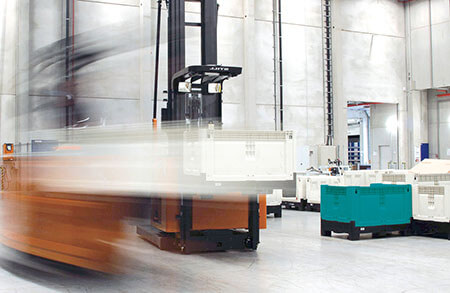
What is Activity Sampling
Activity Sampling determines the frequency of specific activities that define a process executed within a work system or a group of similar work systems by taking a random sample. In production, assembly and logistics these samples are taken by specialist during an observation tour within the defined work systems. Particularly advantageous is the low complexity of the Activity Sampling compared to a full scale survey or time study.
Self-directed Activity Sampling offer a solution for intellectual activities e.g. in administrative and creative tasks that are difficult to observe from the outside. At random intervals a dedicated device will trigger the employee to note the activity currently executed. Activity Sampling will provide usable results even for administrative and creative activities that are hard to evaluate.
Benefits of Activity Sampling
On the basis of the results from the sample, conclusions can be drawn about the temporal structure of activities and procedures. Through Activity Sampling, your operation becomes transparent, weak points and bottle-necks become obvious. This provides the basis for sound process analyzes and optimizations.
One of the most important steps in Activity Sampling is to first define the objectives of the study. Which activities, which processes should be made transparent? In this way, the types of events to be examined can be determined and the monitoring routines planned and carried out.
REFA-Activity Sampling can be carried out with the latest in hardware and software support, eliminating complex manual calculations completely. All details are immediately available in a clear and easy-to-understand final report which allows you to start the optimization process right away.
The Activity Sampling will be executed in 8 steps detailed in the REFA Standard Program - Activity Sampling:
- Define target: As with any data acquisition, a clear target must also be defined for the Activity Sampling. This includes the definition of work system, operators and resources to be included in the study.
- Define activities to be observed: It is necessary to define the activities that must be included in the study. These activities must be clearly identifiable by a short-term observation. Since the total number of necessary observations is driven by the number of activities, only those activities must be included that are relevant to the defined target of the Activity Sampling. Furthermore, activities must be selected and defined in a way that allows for the observation and assessment of all relevant processes.
- Plan observation tour: Routes and observation points are defined and sketched out in a tour plan.
- Define required number of observations: For statistical reasons, the number of required observations (sample size) depends on the required absolute range of confidence f 'of the results. This value indicates an interval (in% of the obtained numerical value) in which the actual value of the value determined in the Activity Sampling may deviate (based on the target probability, usually 0.95). REFA has published a nomogram that makes it easy to manually establish the required sample size. Since the smaller the value f ', the more observations are required for a given proportion p. Therefore the accuracy should be chosen pragmatically.
- Schedule observation tour: In order to meet the statistical requirements and to exclude unwanted external influences, the start time for each observation tour must be chosen randomly.
- Perform the first 500 observations: The necessary observation tours are defined in a tour plan. Start times for each tour are defined randomly, taking into account working hours and breaks.
- Interim evaluation: With an increasing number of observations the assumed distribution of activities will get closer to a realistic value. After about 500 observations an intermediate evaluation will determine the actual distribution and its proximity to the target value.
- Final evaluation: The final evaluation follows essentially the same procedure as the interim evaluation. By using a spreadsheet, a continuous evaluation will indicate the moment the study reached its target.



